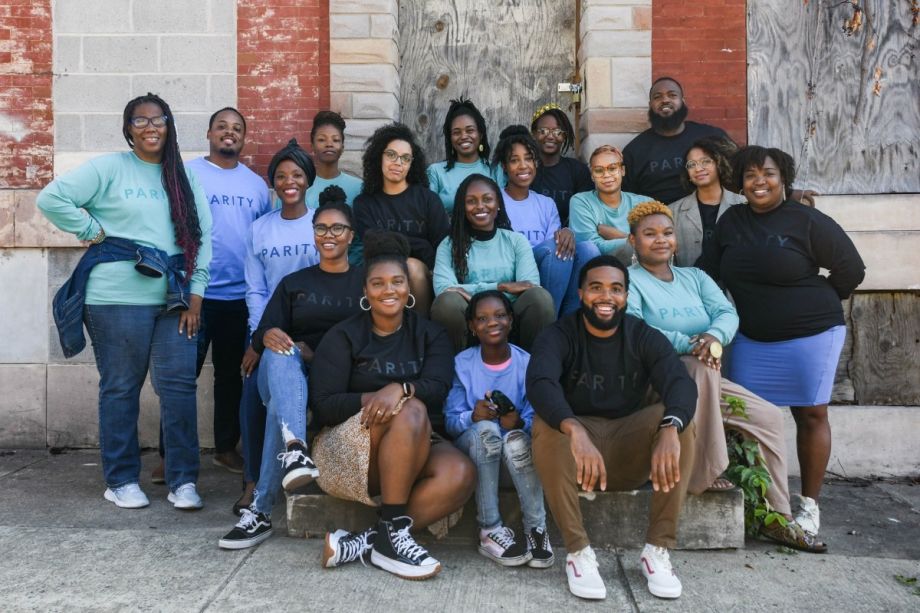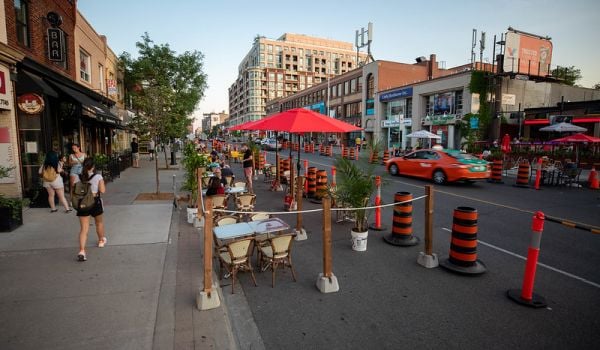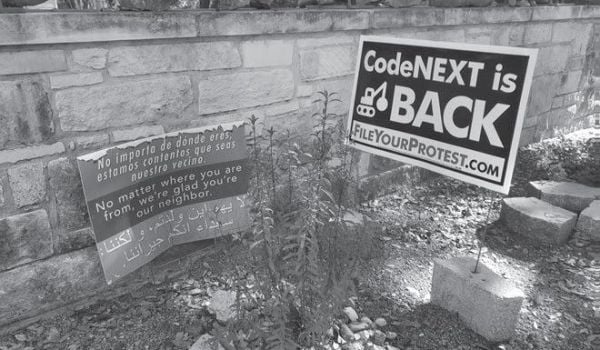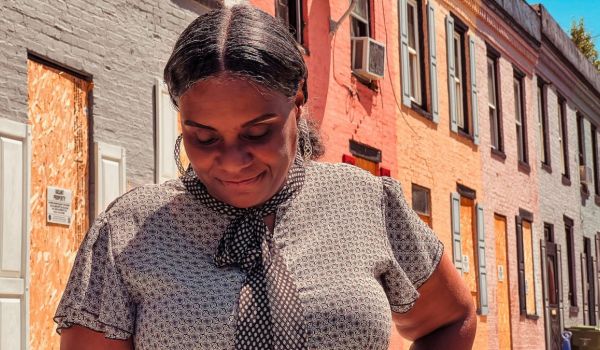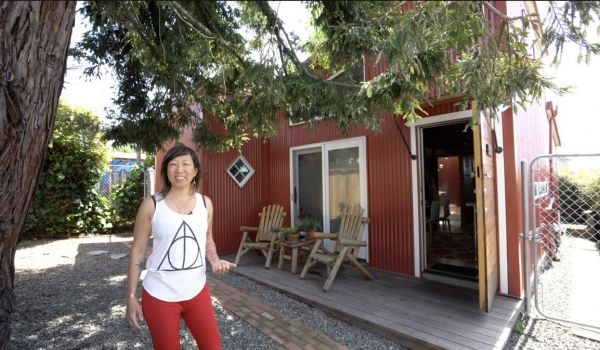Bree Jones rolls deep. Her nonprofit real estate firm, Parity Homes, has a buyers’ collective of 60 households. They have all gone through a proprietary 6-month curriculum Jones built from scratch, covering everything from financial planning to maintenance, community building, and the history of redlining — and how those factors continue to shape the Baltimore neighborhood where they all want to buy homes.
“It’s about building an intentional, mission-driven community,” Jones says. “We talk about common principles — anti-gentrification, the importance of shared cultural assets, green space assets, things that aren’t part of our common dialogue in America anymore. Older generations did it in the 1940s-50s-60s.”
Jones says her buyers’ collective members have all come through word of mouth so far. She talks about her work everywhere she goes — like volunteering with a local church where a pastor’s family is now part of her collective. Some are from the area of West Baltimore where Parity Homes is focusing its work; others are originally from the area but moved out when they were teens and now want to move back.
Parity Homes keeps an architect on retainer to help buyers select one of six floor plans for Baltimore’s signature rowhouses. Options include splitting the home into a two-flat, to create some extra income for the homeowner and another affordable housing unit. Three buyers’ collective members have made their selection, and Jones hopes to deliver their homes later this year, hopefully by July.
“They call me every week [to ask] how’s the house coming along,” Jones says.
For all that Jones has made possible so far, it’s not yet sustainable. For now, Parity is selling the homes for less than what the firm has paid to acquire them. That’s because the homes suffer from the appraisal gap, which disproportionately affects historically Black neighborhoods. After generations of disinvestment, which started with redlining in the 1930s, the homes today require significant rehab, the cost of which can far exceed the values that the homes will appraise for even after rehab.
Some help may soon be on the way. Last year, Maryland state legislators passed a bill to create the “Appraisal Gap From Historic Redlining Financial Assistance Program.” Jones says it started with a conversation between her and Maryland State Senator Antonio Hayes.
“He had asked me to testify about a related issue and after I did that he asked if there was anything he could help me with and I didn’t know better so I brought up the appraisal gap,” Jones says. “It was a little bit of beginners’ luck.”
The funds would fill in the gap between the costs of rehabbing a vacant home or constructing a new home on a vacant lot and the appraised price at which the home eventually sells. However, the bill did not go into effect until the start of the fiscal year in Maryland on July 1, which meant the new program never made it into budget negotiations for that fiscal year.
Jones is banking on it being funded in this year’s budget, which is currently under negotiations. She knows other potential emerging developers like her — especially other women of color — would appreciate the support to do similar work in other disinvested areas across Maryland.
“Financing mechanisms for entry-level housing stock are still few and far between,” Jones says. “Big federal programs like low-income housing tax credits or new markets tax credits don’t really do it. Why not try to make something that fits us?”
The real estate industry has long had “a whiteness problem.” According to Enterprise Community Partners, just 2% of real estate industry firms are Black-led. At the Urban Land Institute, one of the country’s major real estate developer networks, just 5% of its members are African American, while 82% are white — and 69% identify as men.
Even the real estate sub-sectors of community development and affordable housing that serve many Black and Latino neighborhoods have helped perpetuate those disparities. In New York — where Jones was born — the nonprofit Community Preservation Corporation has financed tens of thousands of affordable housing units in communities of color since 1974, but according to its internal analysis, less than 10% of its lending had gone to developers of color.
Often lenders cite the lack of collateral. But that is a chicken-and-egg situation, given that the persistent history of redlining means white homeownership rates and typical white household wealth levels in general remain far beyond that of nonwhite households.
Jones wants to help break that cycle by getting the homes she’s developing into the hands of primarily though not exclusively Black households. When otherwise talented but less experienced developers of color approach lenders with little to no wealth from family or friends as a starting point, most lenders find it challenging to work with them while also satisfying their regulators or rating agencies. Those number crunchers come in on a regular basis and scrutinize each and every loan that a lender has made since the last time they were there for an examination or rating update.
It’s not impossible, but it’s very challenging for lenders to battle with regulators or rating agencies over and over again to defend multiple acquisition and construction loans to multiple emerging developers of color with little to no personal collateral — even more so when everyone can see down the road that the developer may not be able to sell the properties at a price that can cover the cost of acquisition and construction. Often the lenders who are most willing to work with borrowers in these situations will also charge the highest interest rates on the market as compensation for taking on the perceived “risk.”
Bank regulation isn’t inherently evil. The point is to ensure the safety and soundness of the banking system. But the reliance on personal collateral as a risk management factor to dominate all other risk management factors isn’t necessarily set in stone, though it can seem that way if you don’t have any collateral.
Jones has relied on corporate donors, state grants, philanthropic fellowships and a few personal connections to “very patient” seed investors to get Parity Homes going. She’s amassed a portfolio of 40 properties — half through foreclosure auctions or private sales, and half via Baltimore’s annual tax lien sale. The lien sale is currently undergoing a major overhaul after complaints that it’s become a predatory means for big developers to snatch up large batches of properties.
Jones says the tax lien process could also be a lot friendlier to smaller, mission-driven developers like herself. In one ten or so block area she’s been examining closely, she says she’s identified at least 300 properties with tax liens, maybe 70% of them with liens in the six figures. Properties can take up to two years to drag through the foreclosure process. “There’s so much inventory in Baltimore City, but it’s all locked behind liens, encumbrances and other barriers,” Jones says.
The most recent statements from City Hall count 15,032 vacant houses in Baltimore City. Jones says the true number could be much higher — perhaps four times as many. For every 50 vacant properties, Jones says, there may be 50 different owners, half of whom are deceased, a third are in defunct LLCs with outdated if any contact information, “and the rest are owned by speculators who are trying to profit off other people’s trauma.”
The situation bears similarities to other predominantly Black urban areas, like Chicago’s South Side, where local community organizations and small emerging developers face a maze of tax liens upon mortgage liens layered in with a tangle of LLCs and dead-end brokerage phone numbers.
In this post-COVID housing market boom, Jones sees more speculators swooping in with all-cash deals in the neighborhoods where she has properties in the pipeline. Blocks where empty shells used to go for $5,000 are now selling for close to $100,000. Those sales might be connected to the technology-fueled “passive real estate investing” boom in single-family rental properties.
In its sales, Parity Homes puts in a “soft-second” mortgage – essentially a slice of seller-financing that the buyer doesn’t have to repay unless they sell the home later or refinance their mortgage. It helps keep the primary mortgage affordable for the homeowner while serving as a disincentive against house-flipping.
Given all the cards stacked against her — woman, Black, new to real estate development, focused on neighborhoods faced with ownership challenges — Jones is taking all the help that is worth her time. She’s an alumna of the Equitable Development Initiative, a program of Capital Impact Partners, a community development financial institution (CDFI) based in the D.C. area. The initiative is one of a bevy of similar initiatives created by CDFIs in recent years to help diversify their base of developers.
JPMorgan Chase funded the Equitable Development Initiative, which recently awarded a $2 million recoverable grant to Parity Homes, in conjunction with a larger $20 million commitment to Baltimore-focused investments, intended to support more women of color in real estate.
“We’re building the bench for diverse developers in this region,” says Dekonti Mends-Cole, vice president for the Mid-Atlantic at at JP Morgan Chase Global Philanthropy.
The $2 million infusion enables Jones to finally hire her first full-time staff and get her the runway to acquire and sell at least 200 formerly vacant homes. If the appraisal gap program from the state kicks in, or perhaps new federal support from the proposed neighborhood homes investment tax credit, Jones might be able to acquire, rehab and sell even more.
Jones is also hopeful that with larger institutional support, the city will take emerging mission-oriented developers seriously as part of the solution to fix longstanding vacant property challenges.
“The issue is so big it creates a feeling of helplessness, but an institutional partner makes it seem like we can actually do something about it,” Jones says.
This article is part of The Bottom Line, a series exploring scalable solutions for problems related to affordability, inclusive economic growth and access to capital. Click here to subscribe to our Bottom Line newsletter.

Oscar is Next City's senior economic justice correspondent. He previously served as Next City’s editor from 2018-2019, and was a Next City Equitable Cities Fellow from 2015-2016. Since 2011, Oscar has covered community development finance, community banking, impact investing, economic development, housing and more for media outlets such as Shelterforce, B Magazine, Impact Alpha and Fast Company.
Follow Oscar .(JavaScript must be enabled to view this email address)



